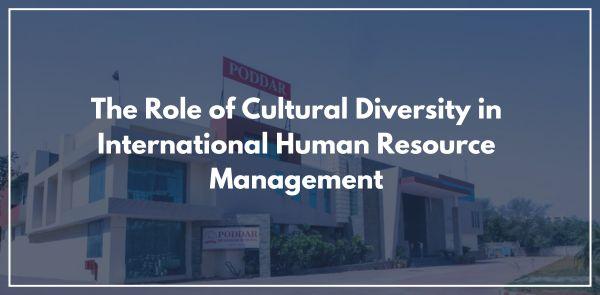
Introduction: In today’s globalized economy, International Human Resource Management (IHRM) plays a crucial role in managing a diverse workforce across multiple countries. One of the key challenges and opportunities in IHRM is handling cultural diversity, which influences workplace dynamics, leadership styles, and employee performance.
Cultural diversity refers to the presence of employees from different ethnic, linguistic, and social backgrounds within an organization. Effective IHRM strategies recognize these differences and implement cross-cultural training, inclusive policies, and adaptable leadership approaches to enhance collaboration and productivity.
One of the primary functions of IHRM is global talent acquisition. Organizations operating internationally must attract and retain skilled professionals while ensuring compliance with local labor laws and regulations. This requires HR managers to be well-versed in international labor standards, compensation structures, and expatriate management.
Another critical aspect of IHRM is communication and conflict resolution. Misunderstandings can arise due to cultural differences in communication styles, decision-making approaches, and workplace expectations. Implementing intercultural communication training and fostering an environment of inclusivity can help bridge these gaps and improve teamwork.
Experiential learning plays a vital role in equipping HR professionals with the necessary skills to manage cultural diversity effectively. By engaging in real-world simulations, role-playing exercises, and international exchange programs, HR practitioners gain hands-on experience in handling cross-cultural scenarios. This approach enhances their ability to navigate global HR challenges and fosters a deeper understanding of different workplace cultures.
Performance management and employee engagement also vary across cultures. While some cultures emphasize individual achievements, others prioritize teamwork and collective success. HR professionals must develop customized appraisal systems that align with cultural norms while maintaining organizational goals.
Additionally, organizations must adapt their leadership and motivation techniques to suit different cultural expectations. For example, hierarchical cultures may prefer authoritative leadership, while egalitarian cultures may thrive under participative management styles. Understanding these differences allows companies to create more effective leadership development programs.
Technology has also transformed IHRM by enabling virtual teams and global workforce integration. Digital HR tools facilitate remote workforce management, ensuring seamless collaboration across geographical boundaries.
In conclusion, cultural diversity is an asset when managed effectively within IHRM. By embracing cultural competence and incorporating experiential learning into HR training, businesses can foster innovation, improve employee satisfaction, and gain a competitive edge in the global market. As organizations continue to expand internationally, the ability to navigate cultural differences will be essential for sustainable growth and success.
